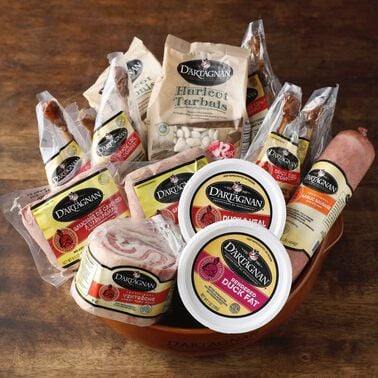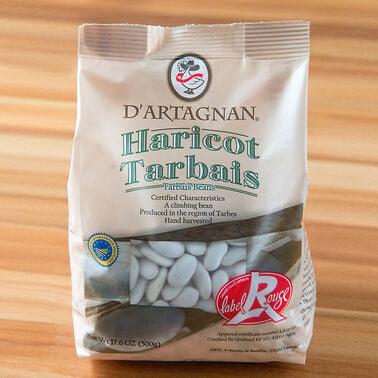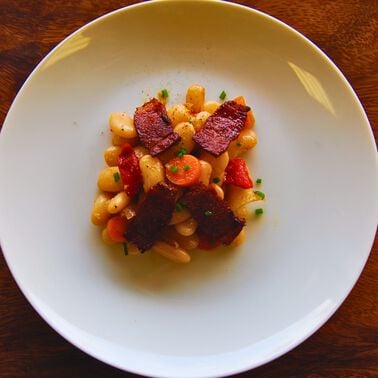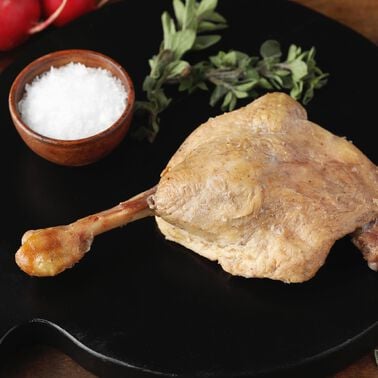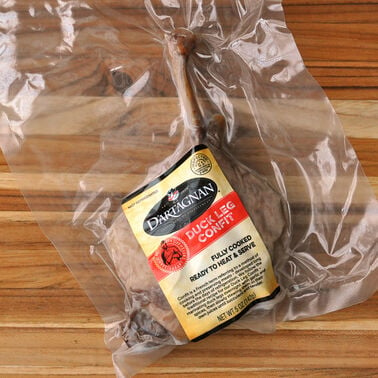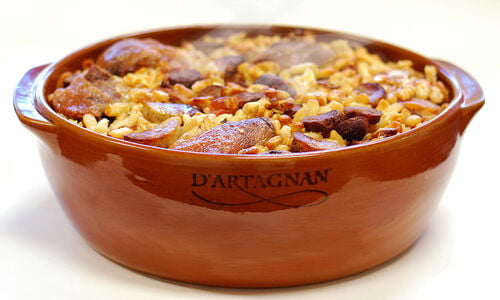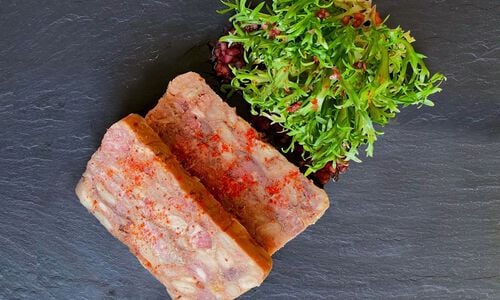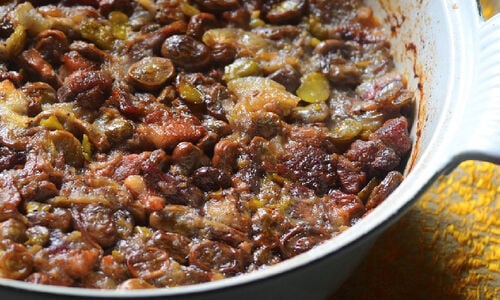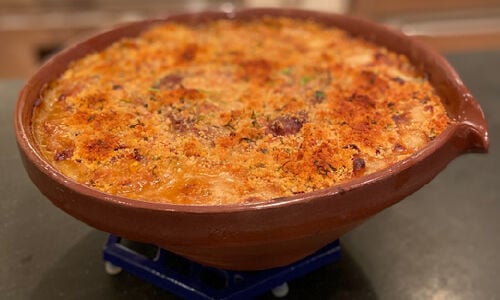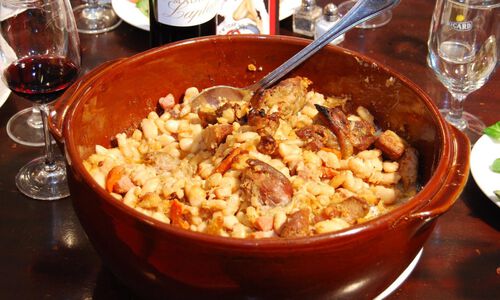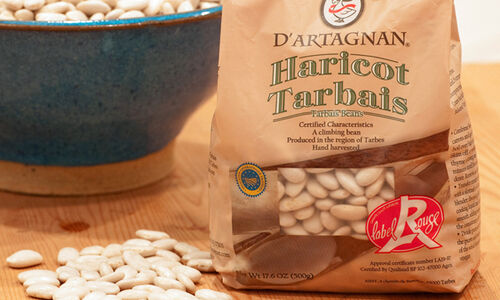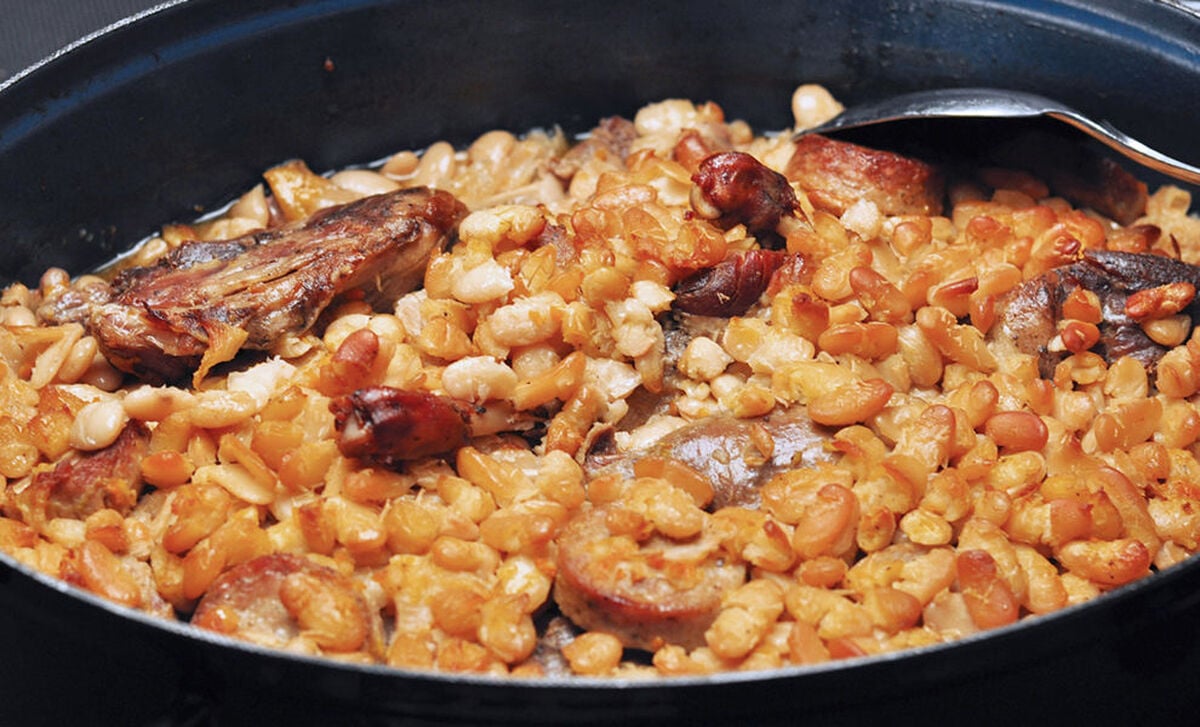
Since its composition is based on availability, cassoulet varies from town to town in Southwest France. In Castelnaudary, cassoulet is prepared with duck confit, pork shoulder, and sausage. In Carcassonne, a cassoulet will typically have mutton, and the Toulouse version includes duck confit, Toulouse sausage, and a blanket of crumbs on top. In Auch, only duck or goose meat is used, and crumbs are never added, instead, they break the crust repeatedly to form a crispy topping. Of course, each town believes they make the one true cassoulet.
Even the type of bean is a point of debate. In the southern areas, it must be the Coco, or Tarbais bean, a large and somewhat flat white bean that grows at the foot of the Pyrénées Mountains. A little further north they use flageolet beans. But everyone agrees that come spring, the last and best cassoulet of the season is made with freshly picked fava beans.
A Hill of Beans
History tells us that Columbus brought the white bean to Europe from the Americas. Subsequently, Catherine de Medici, queen of France, facilitated the importation of the white bean, which started to be cultivated extensively throughout Southwest France.
A Dish of History
The first cassoulet is claimed by the city of Castelnaudary, which was under siege by the British during the Hundred Years War. The beleaguered townspeople gathered up the ingredients they could find and made a large stew to nourish and bolster their defenders. The meal was so hearty and fortifying that the soldiers handily dispelled the invaders, saving the city from occupation. But the origin of cassoulet is probably the result of more global interactions than the Castelnaudary legend would suggest.
Cassoulet Competition
Although it is essentially a humble stew of beans and meat, cassoulet is the cause of much drama and debate. Andre Daguin, a famous chef of Gascony says, "Cassoulet is not really a recipe, it’s a way to argue among neighboring villages of Gascony." Much like chili cook-offs in Texas, cassoulet cooking competitions are held, not only in France but now in the United States, where cassoulet has grown in popularity.
Holy Cassoulet
The sanctity of cassoulet is taken so seriously in France that there is a brotherhood - the Grande Confrérie du Cassoulet – that defends the glory and quality of cassoulet in Castelnaudary, in part by conducting surprise taste tests of the cassoulets offered by local chefs. And there is an Academie Universelle du Cassoulet, whose members promote the cassoulet and its significant cultural heritage (they even have a theme song).
Bon Mot
Julia Child, the original American who went to Paris and brought back a culinary revolution, memorably said, "Cassoulet, that best of bean feasts, is everyday fare for a peasant but ambrosia for a gastronome, though its ideal consumer is a 300-pound blocking back who has been splitting firewood nonstop for the last twelve hours on a subzero day in Manitoba."
Cooking Cassoulet
Originally the cassoulet was cooked in the hearth, or a bread baker’s oven, using residual heat. The low heat allowed the beans to break down and all the flavor and fat of the meat to melt into the beans. This can be replicated in the modern kitchen, and the process will take only a few hours.
Cassoulet Trivia
The name cassoulet comes from the word cassole, referring to the traditional, conical clay pot in which it is cooked.

